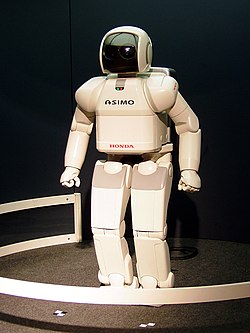Engine and Environmental Technology
i-VTEC

i-VTEC is the acronym for intelligent VTEC (Variable Valve Timing and Lift Electronic Control), an evolution of Honda's VTEC engine. The i-VTEC engine works by controlling the timing and lifting of the camshafts depending on engine speeds. The valves open a small amount during low engine speeds to achieve optimal fuel efficiency. The valves will open wider at higher engine speeds to achieve higher performance. [3]
Honda i-VTEC (intelligent-VTEC) [4] has VTC continuously variable timing of camshaft phasing on the intake camshaft of DOHC VTEC engines. The technology first appeared on Honda's K-series four-cylinder engine family in 2001 (In the United States, the technology debuted on the 2002 Honda CR-V).
What is this referring to: The new mechanism debuted in 2003 with the V6 3.0-liter i-VTEC engine which used a new Variable Cylinder Management (VCM) technology that runs on six cylinders during acceleration but used only three cylinders during cruising and low engine loads. [5] In 2006, Honda introduced the 1.8-liter i-VTEC engine for the Civic which could deliver accelerated performance equivalent to a 2.0-liter engine with fuel efficiency that is 6% better than the 1.7-liter Civic engine. The high power output with low emissions and fuel economy is largely contributed by the improvements in several areas:
- Delayed valve closure timing: This controls the intake volume of air-fuel mixture, allowing the throttle valve to remain wide open while reducing pumping losses of up to 16%, which allows the engine to deliver better power output.
- Drive-by-wire technology: This system provides increased precision control over the throttle valve when the valve timing changes, creating a better driving experience where the driver is unaware of any torque fluctuations.
- Restructured pistons: A more compact piston prevents residual gas accumulation which in turn suppresses engine knocking. In addition, oil retention is improved thus reducing friction and increasing fuel efficiency.
- 2-bed catalytic converter : This is positioned immediately after the exhaust manifold, providing direct contact which allows for high-precision air-fuel ratio control to drastically reduce emission levels.
- Reduced engine weight: The mass of the connecting rods and overall materials used in building the engine frame is reduced, which helps the engine gain better power and fuel efficiency. [6]
The i-VTEC technology is also integrated into Honda's hybrid vehicles to work in tandem with an electric motor. In Honda's 2006 Civic Hybrid, the 1.3-liter i-VTEC engine uses a 3-stage valve design, an advancement from the 2005 i-VTEC technology. Aside from weight and friction reduction, the engine operates on either low-speed timing, high-output timing or 4-cylinder idling when the VCM system is engaged, each yielding better engine output upon varying driving conditions. [7] Its competency helped place the Honda Civic Hybrid as the third "Greenest Vehicle" in 2009. [8]
Earth Dreams Technology
Earth Dreams Technology is Honda's comprehensive powertrain strategy, unveiled on November 30, 2011, aimed at reducing CO2 emissions by approximately 30% by 2020 (compared to 2000 levels) and achieving class-leading fuel efficiency within three years of its launch. [9] [10] To improve fuel economy by around 10%, Earth Dreams introduces a suite of engineering enhancements across engines and transmissions, including the adoption of DOHC architecture, variable valve timing control (VTC), direct injection, Atkinson cycle operation, high-capacity exhaust gas recirculation (EGR), and electric water pumps. Structural improvements such as reduced bore pitch, thinner cylinder blocks and camshafts, and overall engine weight reduction are also implemented, along with friction-reducing measures to improve thermal efficiency and performance. [9]
Key components
- Variable valve systems: DOHC combined with VTEC, and continuously variable timing control (VTC) improve combustion efficiency and reduce pumping losses.
- Direct injection & Atkinson cycle : enhance thermal efficiency, particularly in compact and mid-sized engines.
- Lightweight construction: reduced bore pitch and thinner cylinder block and camshaft walls, yielding engine mass reductions (e.g., ~15% in kei‑car S-series units).
- Friction reduction: optimized internal components and coatings lower mechanical losses.
- High-capacity exhaust gas recirculation: lowers combustion temperatures and reduces NOx emissions.
- Electric water pumps: remove the need for accessory belts, reducing parasitic drag. [11]
Applications
- Gasoline engines: from 660 cc kei-powered S‑series to turbocharged VTEC units; includes K‑series Earth Dreams i‑VTEC and VTEC‑Turbo engines.
- Diesel engines: notably the 1.6 L i‑DTEC; features lightweight aluminium block, turbocharging, common‑rail injection, EGR, and DPF, targeting sub‑100 g/km CO2 ratings.
- Transmissions: upgraded CVTs with reinforced belts, electronic oil pumps, and "G‑Design Shift" logic, improving efficiency by ~5-10%.
- Hybrid and electric systems: include i‑MMD/ i‑DCD dual‑motor hybrids, Sport Hybrid SH‑AWD with torque-vectoring, and dedicated EV powertrains. [12] [13]
Philosophy
Honda's naming of the system as "Earth Dreams" reflects its dual goals of protecting the environment and preserving driving enjoyment. The approach integrates incremental improvements across engines, transmissions, and electrified systems for optimized overall efficiency. [14]

